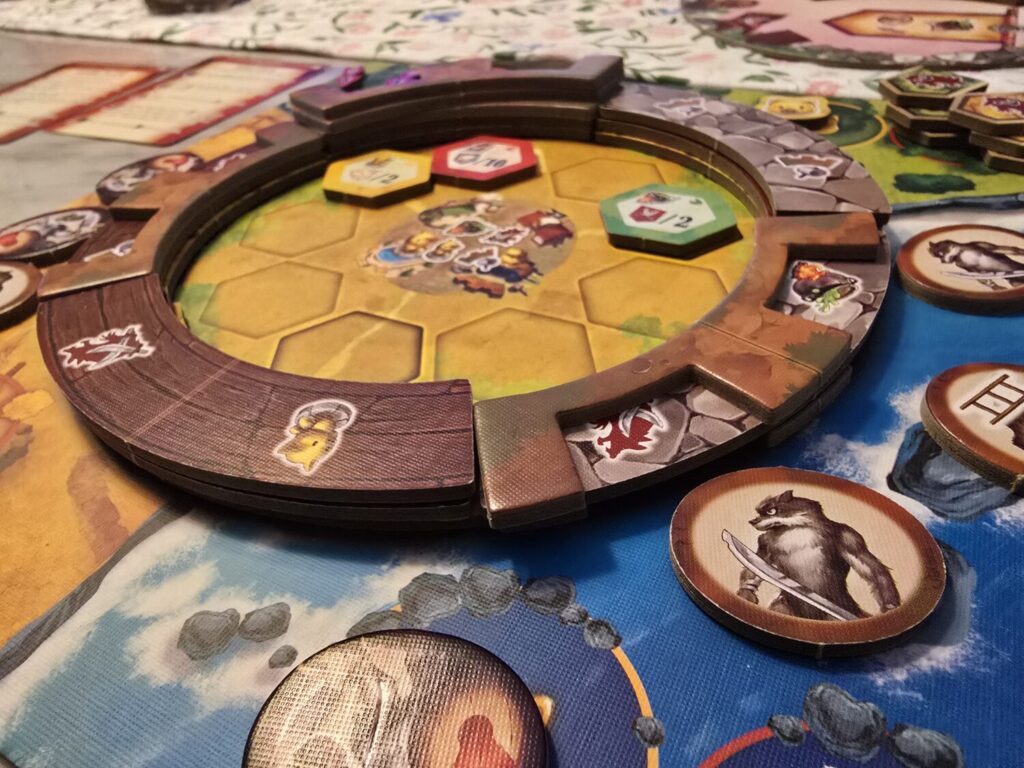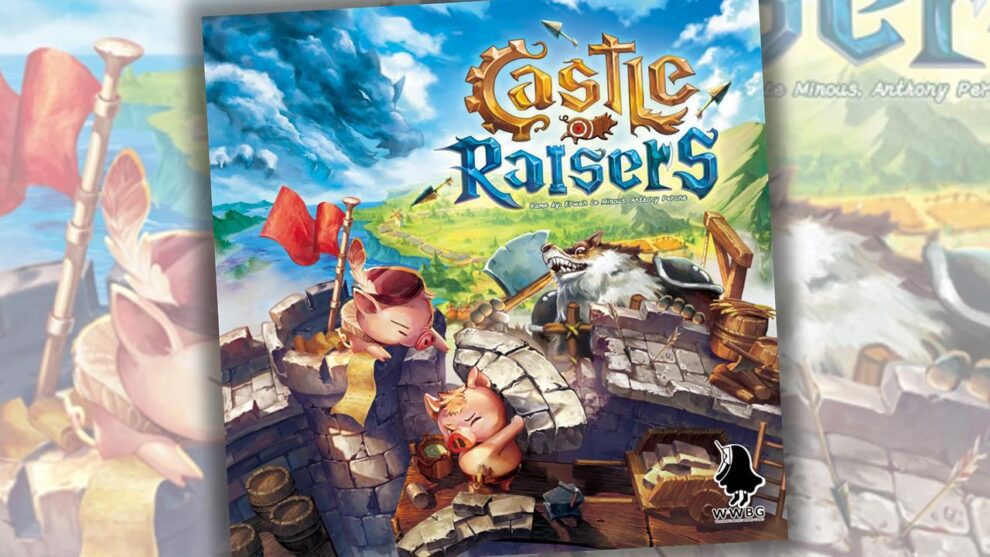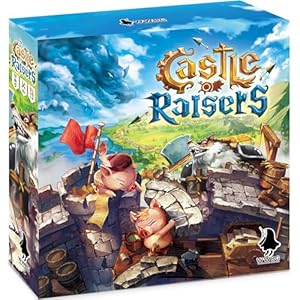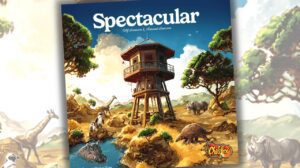Disclosure: Meeple Mountain received a free copy of this product in exchange for an honest, unbiased review. This review is not intended to be an endorsement.
Little Pigs, Come Out and Plaaaay
Castle Raisers generated a lot of buzz at Essen 2024. Though I wasn’t in attendance, this was hailed as an “easy to learn” game with a depth of decision space. The game has since been fine-tuned in development and is aiming for a big release at GenCon 2025. This title comes from the French design duo Le Minous Erwan and Anthony Perone. It features charming fairy-tale art from Zingco Kang and Yuan Momoco, highlighting the ongoing quest of those rascal wolves to invade pigs’ domiciles. Playing as pigs, players draft tiles to build castle walls, fend off wolf attacks, and protect the inner sanctum. The game includes competitive, solo, and cooperative modes of play. Building and stacking walls is the primary focus, similar to Tower Up and Castle Panic.
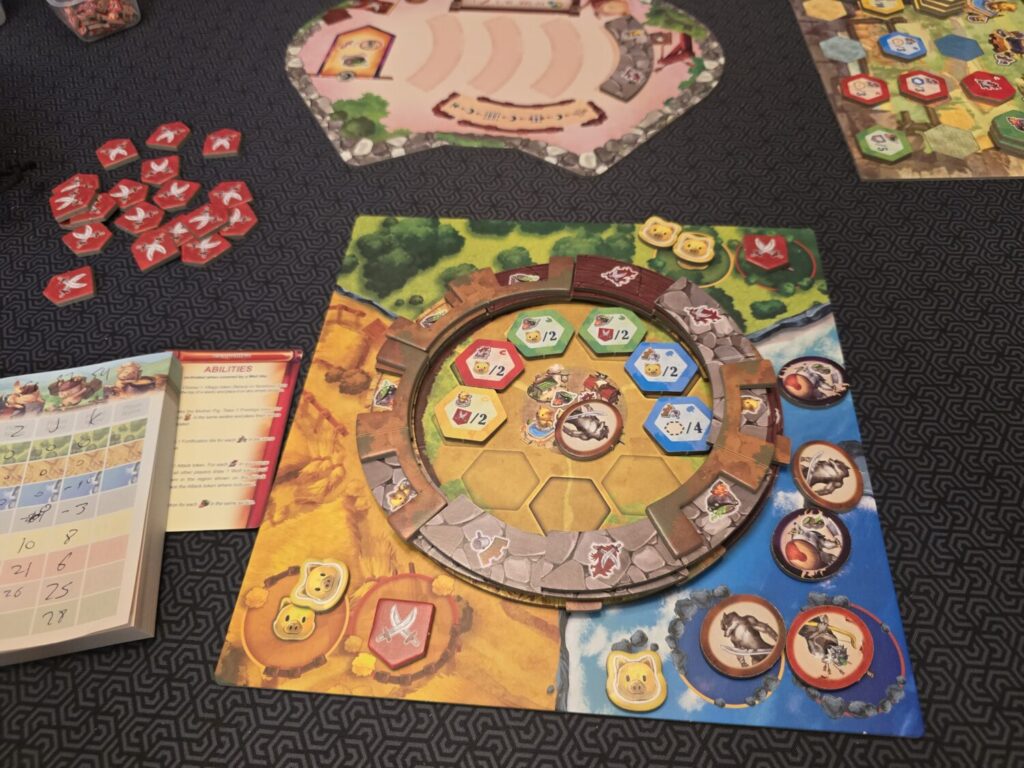
If You Build It, They Will Come
Castle Raisers is played over three eras (straw, wood, stone—much like the fairy tale) in which players draft castle-wall tiles into one of three castle sections. When placing a tile, players activate the action icons it covers. The strength of each action depends on how many of those symbols remain uncovered in the activated section. These symbols can originate from other tiles or village tokens placed inside the castle walls. Certain actions allow players to draft these village tokens, which provide end-game scoring opportunities and additional icons that strengthen actions. Other actions involve “attacking,” where players draw wolf tokens from a bag to invade their walls. While wolves aren’t an immediate threat, players lose points at the game’s end based on how many wolves breach their defenses. Remaining actions change the first-player marker, grant prestige tokens, build fortifications, or dump soup to remove pesky wolves.
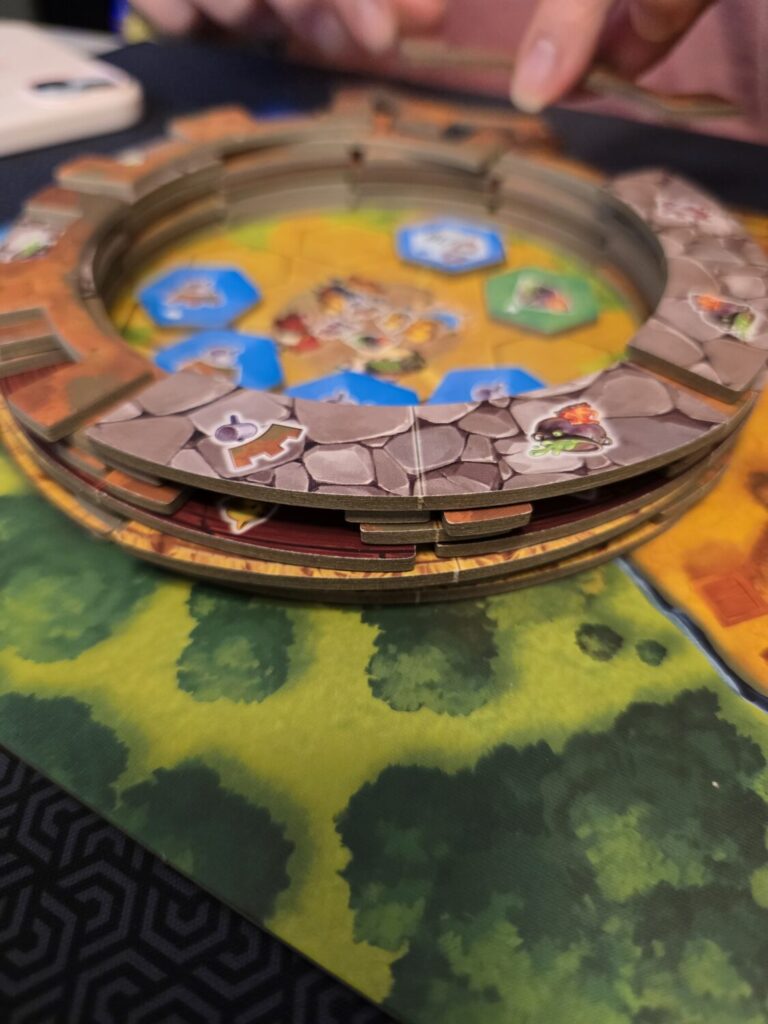
I’ll Huff and I’ll Puff
Overall, the game is solid. The mechanics are simple—drafting walls—but the puzzle lies in the decision space. You’re always thinking a turn or two ahead, as the tile you draft isn’t necessarily the action you take, and there’s always a risk of getting locked out of certain actions due to drafting variability. Beyond this decision space, however, the game doesn’t offer much additional intrigue. There’s a threat of negative points from having too many wolves at the door, but in multiple plays, nearly everyone cleared their board by the game’s end. The game is generous, offering all players a free “remove wolves” action (dumping soup) at the end of each era if they have the appropriate symbol showing. It’s relatively easy to have this action queued, making mitigation nearly always available. Wolves only infiltrate if your walls aren’t sufficiently high (or if there’s a wolf with a ladder), but mitigation is plentiful enough that it never truly feels high stakes.
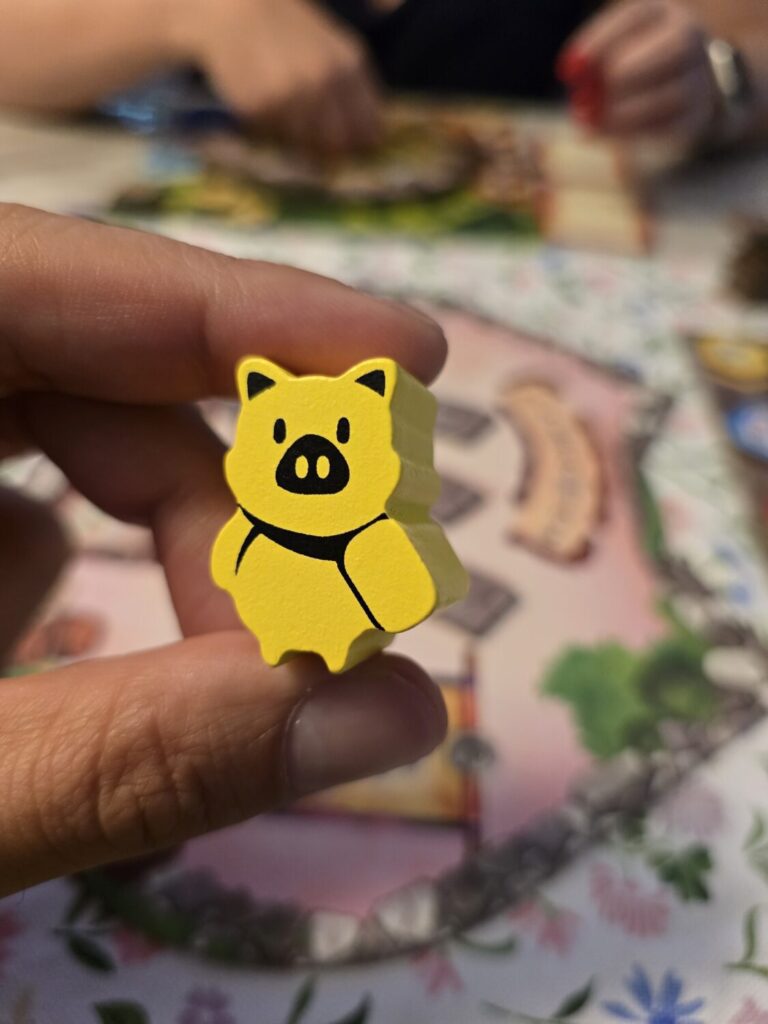
I found the cooperative mode more engaging, as players must collaborate to remove a large number of wolves and achieve a minimum score to win. It provided a more strategic balance in building and scoring, and we narrowly surpassed the required score each time. Across multiple plays, recurring confusion arose about determining action strength and whether covered icons count (answer: it depends on the specific action).
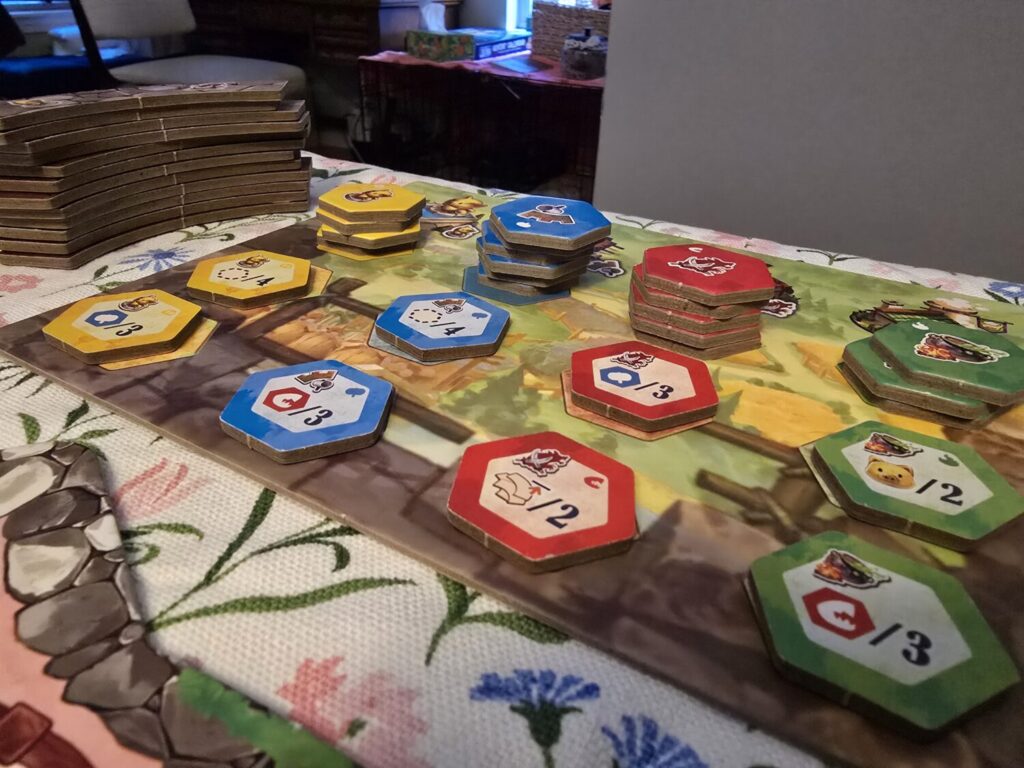
Still, while I didn’t personally find the game highly exciting, it has elements others will surely enjoy. It fits nicely into a short, “gateway” niche, inviting non-gamers and family members of all ages. The charming art evokes children’s books from my childhood, and the theme cleverly riffs on the “Three Little Pigs” story. Though the wall tiles lack variety (you’ll see them all every game), drafting order mixes things up sufficiently to keep play interesting. Castle building also adds a “toy” element, with players watching their 3D castles rise over time. The physical aspect of watching your castle walls grow higher creates a tangible sense of progression, something often missing from more abstract games. Additionally, the game length strikes a nice balance, keeping the experience short enough to maintain attention while providing enough depth to encourage repeated plays. With its solid foundation and inviting aesthetics, Castle Raisers will likely hold players’ interest for a while, even if it might not keep the wolves at bay indefinitely.
